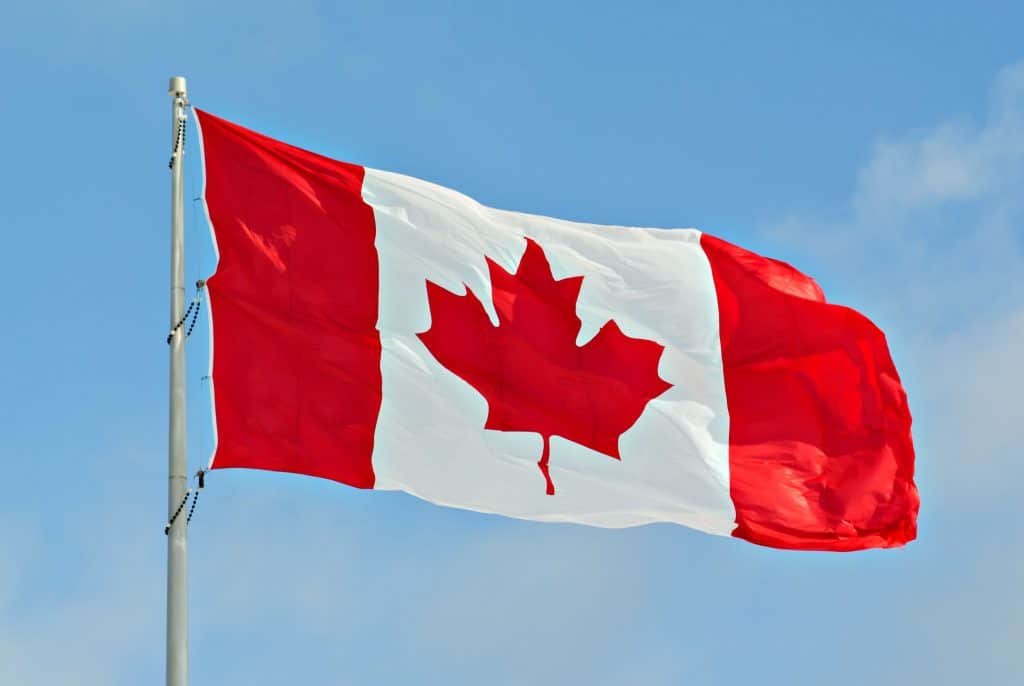
Paramotoring is an extreme sport worth your precious time. Most countries don’t require a license to fly because the sport is still young. What about Canada, then?
Canada requires paramotor pilots to have a license/permit to fly. The minimum age for this permit is 16 years old. Before applying for a permit, pilots must go through training, pass a medical fitness standard, register the paramotor, and have simulated flights at a minimum of 5 flight hours among other things.
Our friends in Canada sound strict, but maybe they’re just ahead of the regulation game when it comes to paramotors? If that’s the case, I guess we’ll have to look in it.
Transport Canada Regulations
As a start, you probably want to know what Transport Canada is (unless you’re Canadian – then you probably already know). Transport Canada is the regulation and authority on transport for flight. The Canadian government all the rules and regulations for paramotor pilots on its site (or as they say ultra-light aeroplanes).
The process to obtain a permit to fly your paramotor takes a bit of time. You can either get a temporary permit or a permanent one which is called a continuing permit. Either way, you’ll still have to pay money and go through the process wet forth by the Canadian Civil Aviation Authority for paramotors.
The regulations cover all of the following requirements (and the process to obtain the necessary documentation):
- Age and Medical Fitness
- Knowledge (Training)
- Experience (Flight Hours)
More detailed requirements are covered specifically in the Canadian Aviation Regulation (CAR) listed on the TC site.
It can be a bit confusing for anyone who isn’t Canadian to understand what the Canada website exactly means within its books. So, for all of you who are unfamiliar- which may even be some of you Canadians, I’ve tried clarifying some details for you. Paramotors are classified as ultralight aircraft in Canada. What is an ultra-light aircraft?
“Ultralight aviation is the flying of lightweight, 1- or 2-seat fixed-wing aircraft. “
WikiPedia
That is easy enough to understand. Paramotors aren’t the only ultra-light crafts out there. There are actually four different types of aircraft included in the ultra-light airplane category.
“Ultra-light aeroplane” Grouping
- the three-axis
- the powered hang-glider (also called a trike)
- powered para-glider (a.k.a. paramotor)
- the powered parachute with a trike
These ultra-light aircrafts are also only for solo flyers. Carrying passengers and things that require more than one person is not allowed. Transport Canada specifies that except for training flights,
“no commercial or passenger transport activities are allowed in powered parachutes.”
Transport Canada (TC)
This is different from most other countries as flying in tandem and/or carrying passengers is generally allowed. However, it is not in Canada, so I guess that romantic flight date with your love has to happen somewhere else as Canada doesn’t allow it. Just remember to be safe and obey the laws of Canadian air space, solo rides only are allowed.
Age and Medical Fitness
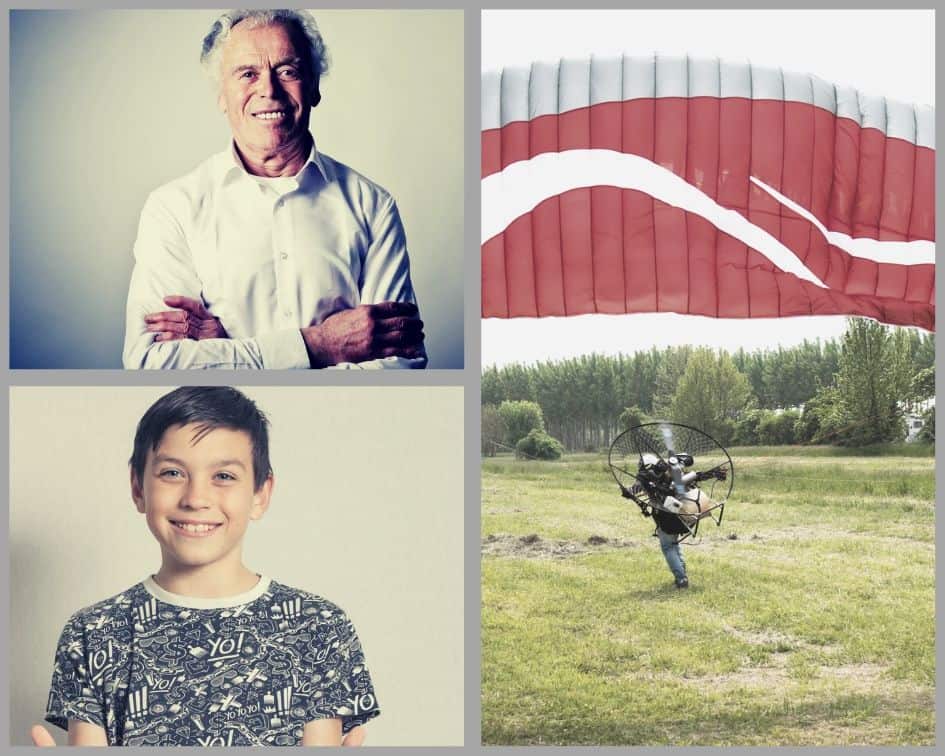
The licensing age for paramotors is 16 years old. For medical certification (the certification which states that you are physically able to fly) is the Category 4 Standard Medical Certificate.
When I first read about the medical certificate, I was thoroughly confused. I don’t know if it’s a well-known thing, but I’ve never heard of it before. That’s why I’ve given you a simple explanation of what Canada is requiring.
There’s more than one certificate, and apparently, the other categories (3 and 1) may also be accepted.
Medical Certificate Category 4 Standard – Held by recreational pilots who have filled out a self-declaration form with any doctor. After the form is filled with a doctor, the prospective pilot can take the form and fill out a TC Medical certificate application.
Category 3 and category 1 medical certificates are obtained after a medical examination done by a designated Aviation Medical Examiner (AME).
It’s important to be physically fit when flying; you must be at least in shape enough to keep you safe. This sounds like common sense. Did you know that most paramotoring accidents are caused by pilot error? If there were no requirement for pilot health, there could be anybody in the air and you wouldn’t know.
When you are not fit enough, you can put yourself and others in terrible danger. It’s okay to not be in perfect health, but it’s not okay to ignore your own safety and the safety of the people who are around you.
Knowledge (Training)
Paramotor flight training, no matter what country you’re in, is important. Some people choose not to do training and decide to train themselves, but you can’t do that in Canada.
“Holders of a recreational pilot permit-aeroplane or a private pilot licence-aeroplane or higher have the right to act as a pilot-in-command of a powered para-glider or any type of ultra-light aeroplane, as per their aviation document.”
Government of Canada
If you aren’t trained, you can receive a huge fine if you’re caught. There are some Canadian pilots who have been flying without a license for several years and have never been fined, but were they to be caught the fine would probably be bigger.
There are two sections of training which are covered:
Theoretical
The theoretical portion focuses on general aviation knowledge and possible emergency scenarios which could happen during the flight. This is generally done in a classroom and there isn’t a lot of flying during this training.
Practical
Practical training, as you may guess, focuses more on the hands-on experience. While both are important, they are not done separately and you switch between the two- that way you get a more rounded educational experience.
Besides, if I had to sit in a classroom all day just to learn how to fly, I’d get annoyed pretty fast. Teaching both of these methods simultaneously makes the training and experience less painful and a lot more fun. Plus, it makes you a well-rounded paramotorist.
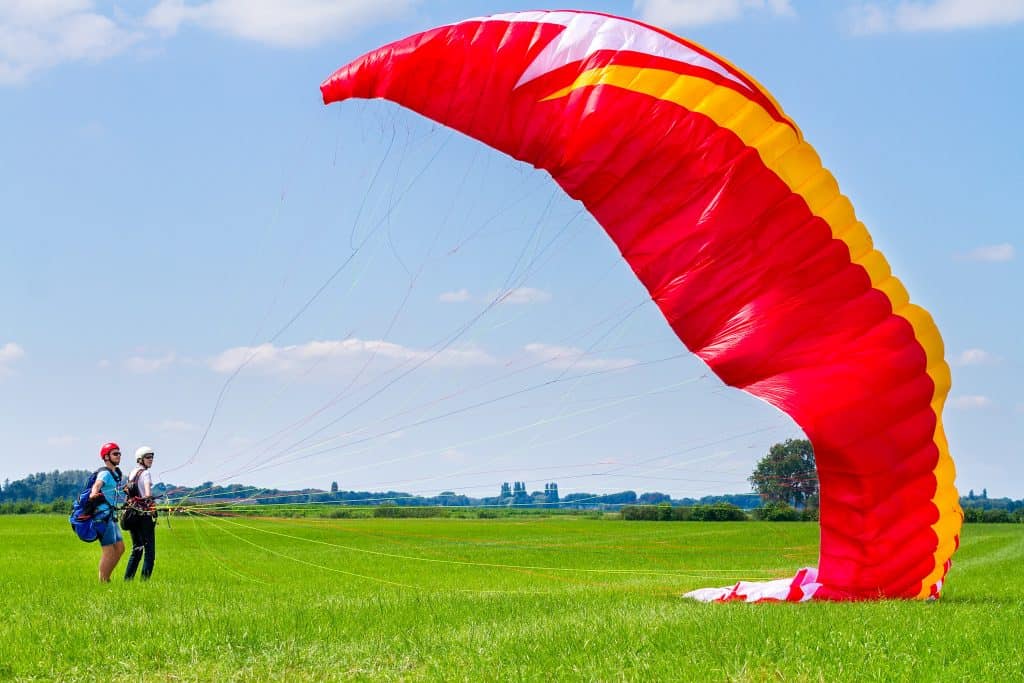
If you don’t pass the training, you can’t fly. Each flight applicant must complete a minimum of 20 hours of ground school instruction. These hours could also be adjusted for those applicants who have a harder time learning. However, the minimum is 20 hours. Many subjects are covered during the training:
- air law
- practices and procedures
- aerodynamics
- air navigation
- meteorology
- engines
- airframes
- flight instruments
- flight operations
- human factors
- pilot decision-making process
- emergency procedures
You also have to get a minimum of 60% on the written exam. I think that is a bit low, but it’s great for those who just want to get the course over with.
Plus, in most countries, you don’t need a permit or a license to operate a paramotor, so maybe that’s why the minimum passing grade is so low.
Below is a list of resources which would be found on the examination, and study guides to help applicants to pass the test. All of these links were taken from the TC (Transport Canada) website.
Flight Crew Examination Resources
- Examination Locations w/names of AEIs (Authorized Exam Invigilators)
- Study, Sample, and Reference Guides
- Flight Crew Recency Requirements Self-Paced Study Program
- Examination: Computer Exam Works on
- Abbreviations and acronyms to know
Transport Canada gives you all the resources you need to succeed in passing the flight exam. All you have to do is study and do your best. Besides, 60% is not too bad of a passing grade line. I’m sure you’d get higher than that though. Because paramotoring is super simple, I don’t know, but I bet a lot of people pass the exam pretty easy.
I don’t know if that’s true, but it seems likely to me. From what I’ve learned, it’s pretty cut and dry.
Experience
It’s all fine and good to have the training, but it’s entirely different to have experience. Most of the training that happens is simulations and ground practice. Being on the ground and being in the air is not the same.
It’s like in those romance movies where there’s an employee who thinks they know everything because they’ve studied such and such for a long time, but they don’t have any real experience so they don’t actually do well. Lacking experience is like that, annoying and a nuisance for everyone who has to watch them pretend they know.
Having hands-on real experience is important in anything that you are learning how to do. It’s most especially important with paramotors so you don’t kill yourself when you fly.
Even though the training is a nuisance, you’ll be grateful you went through the tests. Besides, having the documentation can sometimes give you a sense of accomplishment and success. It all depends on your effort- whether or not you’ll actually succeed- but at least you have a chance.
After you’ve completed the training and passed the examination, after 24 months (2 yrs.) the applicant must have a minimum of 5 hours dual instruction flight time and 2 hours solo flight time. This includes a minimum of 30 takeoffs and landings. (10 of these need to have been done as a solo occupant.)
Included in these “experiences” are the simulations and dual flights (where your instructor is with you the whole time – or at least assists in getting you in the air.
In my opinion, it seems a little excessive, but the law is the law however you look at it. People have made it so it needs to be followed.
It is also important to remember that these laws have been put in place for the safety of individuals flying and those on the ground. So, if you are from Canada, be ready to embark on the full journey to getting your license.
Paramotor Registration
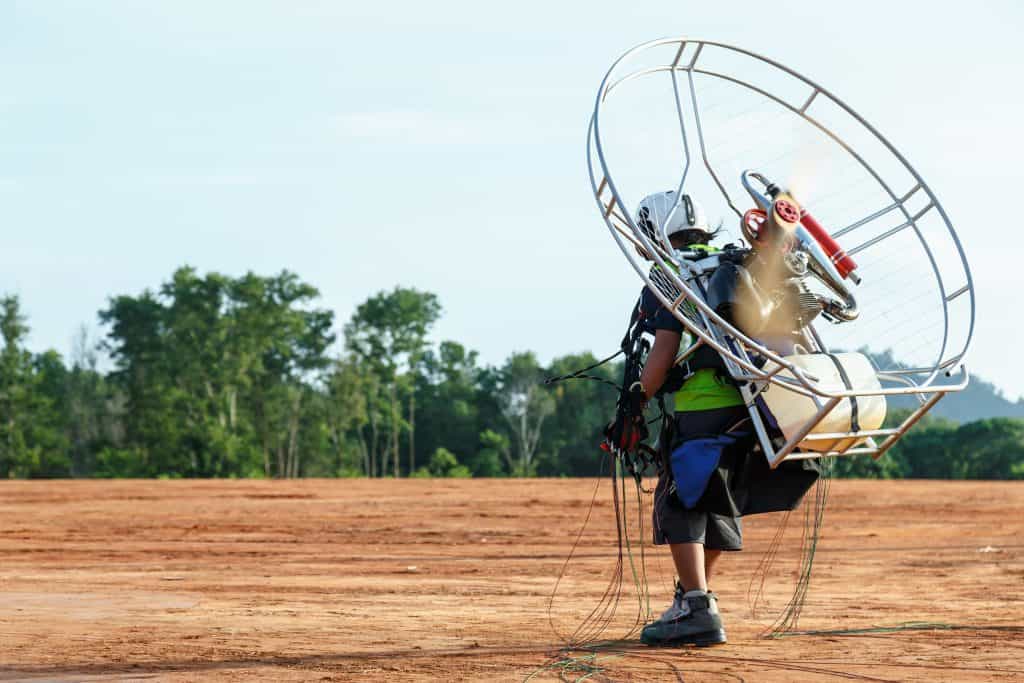
It is a requirement by Canada law to register your paramotor. Just like you would have to do for your car, paramotors need to be registered in Canada. It’s a nice way to categorize and organize things for the government and law. Paramotor registration is as simple as registering your car.
If you think of it as well, they can’t give you license plates or tags to put on your paramotor if you are not registered. Proof of purchase helps the world function just a little bit better. You know it’s yours, and so does everyone else. Oh, the things we do for order and progress!
It also proves that you own the paramotor and haven’t stolen it from anyone. You don’t want anyone to think you are a stinker. (I mean, a thief.)
- Title to Certify aircraft ownership
- Photo of Paramotor data plate (incl. manufacturer name, model, serial #, and fee payment.)
- Registration Marks should be clearly visible
The requirements for registration depends on the type of ultra-light aircraft you are registering and the cost may vary. Hopefully, it won’t be too expensive, but you never know.
Lower down in this post is a table with all of the costs for each piece of paramotor pilot training and registration. It all comes to about $500, but that all depends on what you do, and if you get any of the extra requirements (like the Restricted Operator’s Certificate).
As for where to go to get all the information, you’ll definitely have to visit the Canadian Transport site. This article is gathered a lot of useful information from it, but there are more specific and detailed instructions for visitors there. You can find out just what you need to do, and you can do it without worrying about missing something if you go directly from the site.
Liability Insurance
Insurance protects you, and it protects everyone else around you. I personally would get insurance for my paramotor wherever I lived. Paramotors are recreational activities- this means a lot could possibly happen while you fly.
It’s best to insure yourself and protect you and your property from those sorts of people who try to milk you for money when something happens.
“Powered para-glider owners must have liability insurance covering risks of public liability in an amount that is not less than $100,000 (CAR606.02).”
Transport Canada (TC)
You never know what could happen. Paramotoring accidents are bound to happen, especially when you are training. Hopefully, you don’t have too many accidents and no serious ones, but it’s inevitable to get into a few scrapes here and there.
Even the most experienced paramotor pilots get into accidents. These can be minor accidents as well, such as coming in too hard for a landing. Besides, insurance is one of those things that give us peace of mind – everyone could use a little bit more of that in their lives, right?
All of these things together come up to quite a hefty price, but just so you know, you don’t have to do all of it. I mean, you have to have insurance and registration, but there are other options which I’ll lay down later.

How Much Do the Requirements Cost Altogether?
Laid out, all of the licensing and registration is a lot. Don’t forget that you have to pay for it all as well as go through the process.
| Price Totals for Paramotor Licensing in Canada | Price |
| Ultralight Temporary Permit (Opt.) | $40 |
| License/Permit (Continuing) | $55 |
| Restricted Operator Certificate (Opt.)* | UNKNOWN |
| Aviation Medical Examination | $75-$100 |
| Medical Certificate | $40 |
| Exam for Flight Crew Permit | $35 |
| Insurance | Ex: $160 per year |
| Paramotor Registration (Continuing) | $110 |
| Temporary or Provisional Registration | $65 |
| Total Cost (Temporary) | $415 |
| Total Cost (Continuing) | $495 (Give or Take) |
*Note: Restricted Operator Certificate price not calculated into the final price of licensing and registration because it depends on the area of purchase.
Ultralight temporary permit $40
You probably won’t need to pay for a temporary license/permit. If you aren’t going to be in Canada for long this may interest you.
This permit is an informal version of the real license and takes about as long to receive. You’re probably better off just paying $15 more for the formal license.
Permit $55
The application form should be filled out first. Once that’s done you can pay the fee and they’ll process your information for the permit.
Note: Before paying for any kind of license or permit, every pilot should have filled out an application and received a confirmation from Transport Canada Civil Aviation staff that the application was approved.
Restricted Operator Certificate (Price depends on Local Agencies)
Sometimes paramotor pilots wish to communicate with each other using radios. Two-way aviation radios are available on the market for purchasing and can be used with this certificate.
Recreational aircraft vehicles cannot be heard via two-way radio (FRS, GMRS, etc.) by larger aircraft, that’s why a restricted operator certificate exists.
Before purchasing the Medical Certificate, you have to go through the process of getting a doctor’s physical examination. It could cost you $75-$100 depending on where you go and what it’s for (recreation, large aircraft, etc.)
After the examination has been done and is signed by the doctor, you can fill out an application form for the Category 4 Medical Certificate.
Insurance Ex: $160
The kind of insurance you get and the price all depends on where you go. However, there is a minimum requirement outlined by TC.
You can easily be fined a huge cost if you don’t have insurance. I mean, that goes without saying, but sometimes it doesn’t hurt to have a little reminder; especially if that reminder saves you a couple of hundred bucks when you choose to be a dum dum.
Paramotor Registration $110 ($65)
Not all paramotors are eligible to be registered. Let’s take, for instance, your friend’s homemade hunk a junk he has hiding in his basement, might not pass inspection when you are going through registration.
Most likely. you’ll be just fine whatever paramotor you are going to get registered. But, you never really know; that’s why you have to go in and figure it out with them registration peoples.
Yes, it’s expensive but think of all the benefits you’ll get from knowing that your paramotor is safe and usable. Paramotoring has always been known as a bit of a pricy hobby.
Many people have commented on the long and strenuous process of registration, training, and all the requirements it takes to get a license.
However, if you think about, it’s okay, these laws and rules have been created because people have been hurt before. They were created to help all paramotor users to have a good experience. while flying without the fear of losing their lives.
There are so many people who don’t like that there are rules in this world, but some rules are there to keep us safe and I think we should keep them.
Why Get a License? Can’t I just Fly Free?
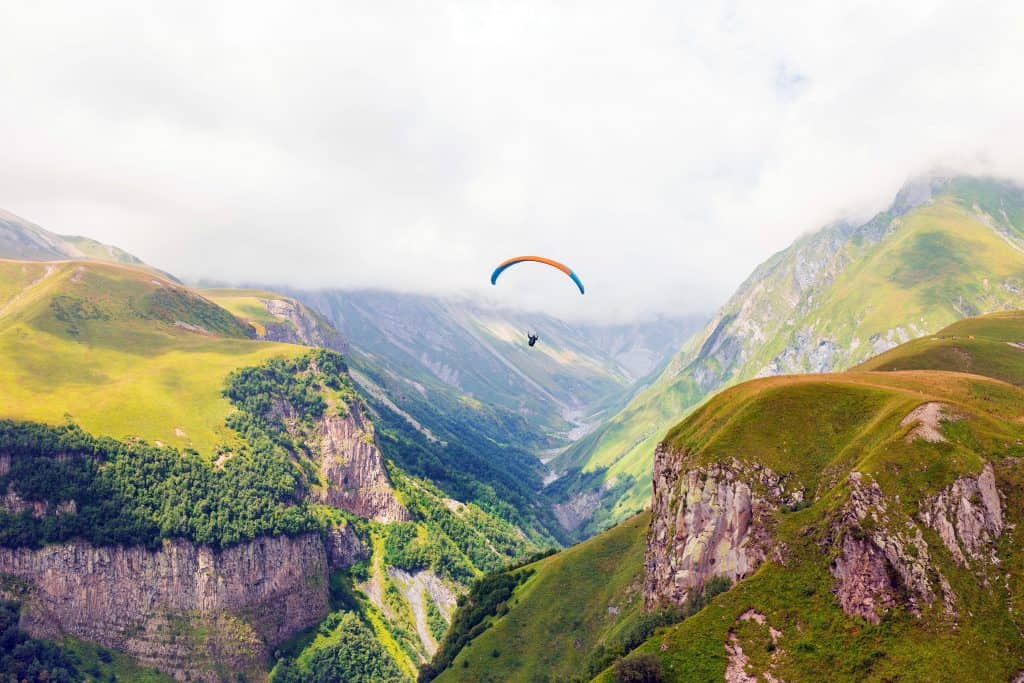
In many countries, you can just go fly your paramotor without a license. As you have learned, that’s not the case in Canada. In this country, they put an emphasis on having insurance, proper training, and a license. All of these adds up to you being a safe flyer and a lot of extra money missing from your wallet.
You may wonder why you should get a license in the first place? Is it even necessary to get one? You may have come across the name Jean Gauthier in your paramotor searches. Jean Gauthier is a pretty well-known paramotor pilot in Canada who doesn’t fly with a license.
He’s against getting one because he believes it’s entirely unnecessary and that Canada Transport is a hoax. He believes they don’t have the intention to enforce the fines they’ve stated to incur should anyone fly without a license.
There is a lot of political background with regards to this issue, so to avoid getting political, because I’m quite unfamiliar with Canada law, I’ll just say that so far no fine has been enforced on Jean Gauthier and he’s been flying without a license since before the year 2013.
Can you fly without a license? You CAN fly without one. Should you fly without a license? That’s all up to you. You may be caught without having the proper permission or insurance and that may end you up in a lot of trouble. This is especially true if an accident occurs without a license.
All I know definitively is that Canada requires one, but Jean Gauthier flies without one. He has several YouTube videos explaining his side of the situation and you’re welcome to go watch them.
All you have to do is google his name with the name “paramotors” and it will pop up. “Jean Gauthier Paramotors”
Safety First
Whatever you choose to do, keep in mind that it’s important to be safe while flying. Get the best training you can, so that you can be a responsible pilot out there. It doesn’t matter your personal stance on whether or not you should get a license, what matters is whether you have the common sense to conduct yourself in a manner which will keep you and those around you safe.
The training and examinations offered are a good way to help you to learn new and better ways to fly; ways that will help you to enjoy flying, give you some practice and help you to grow as a person. Money isn’t anything compared to learning something new. Once you’ve learned something, and it’s in your head, no one can take it away from you.
Even people with memory loss will have muscle memory with things they’ve learned to do in the past. An older woman or gentlemen can play the piano or sing really well despite their lack of personal memories. So if anything, getting a paramotor license will teach you something you didn’t know before.
I always enjoy learning new things, even if they can sometimes be annoying, they’re worth learning. Everything is worth learning if it helps you to change and grow.
